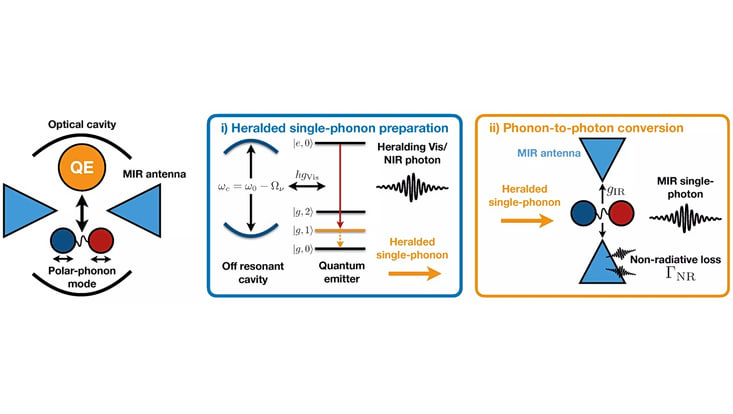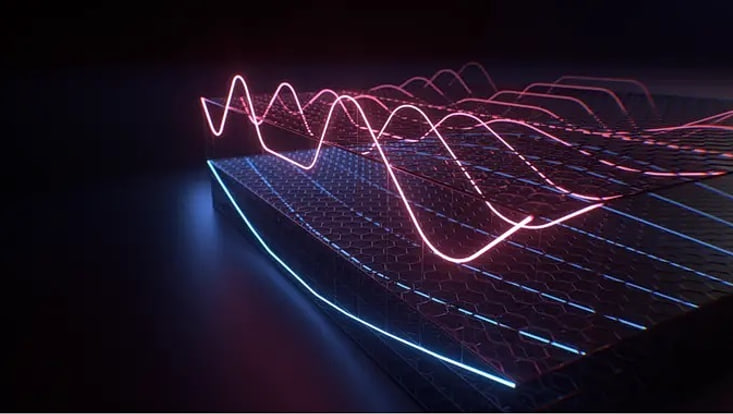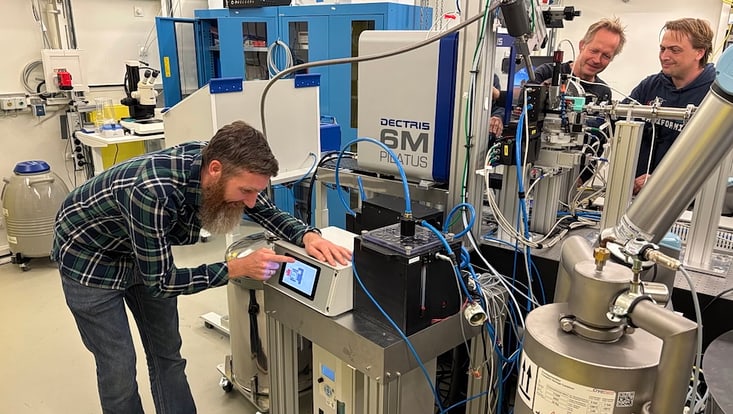Imaging of Matter
Breakthrough in Mid-Infrared Single-Photon Generation
26 March 2025

Photo: J. Iles-Smith et al. / AAAS
Researchers at the Max Planck Institute for the Structure and Dynamics of Matter (MPSD) in collaboration with DTU Electro, the University of Sheffield and the University of Copenhagen, have proposed a novel method for efficiently generating single photons in the mid-infrared (MIR) range. This theoretical breakthrough, published in Science Advances, has the potential to revolutionize quantum technologies by enabling new applications in molecular sensing, precision metrology, and quantum communication.
Single photons are essential for quantum metrology and precision spectroscopy, where they significantly enhance measurement accuracy. While most existing single-photon sources (SPEs) operate in the visible and near-infrared ranges, their efficiency declines significantly in the MIR and terahertz domains. Advancing MIR single-photon sources could enable groundbreaking applications, such as non-invasive biological imaging, pollutant detection in biological fluids, and in-depth studies of molecular vibrations.
The method is adaptable to a wide range of quantum emitters
In the study, researchers developed a technique that leverages the coupling between visible-frequency single-photon sources and phonons—vibrational modes of a material’s crystal lattice—to generate single MIR photons. According to Nicolas Stenger, Associate Professor at DTU Electro, “the process enhances specific optical transitions, first preparing a phonon mode in a quantum state before converting it into a single MIR photon via a specially designed antenna. This method not only enables on-demand single-photon generation but is also adaptable to a wide range of quantum emitters, including two-dimensional materials, nanocrystals, and molecular systems.”
“By unlocking single-photon generation in the MIR regime, we are opening the door to more precise molecular studies and potential breakthroughs in fields such as drug development and materials science,” explains Mark Kamper Svendsen, junior professor at the University of Copenhagen and a former researcher at MPSD, and first author of this work with Jake Iles-Smith from the University of Sheffield.
“This work marks a major step forward in harnessing quantum light for practical applications and sets the stage for experimental validation and future technological advancements,” says Angel Rubio, Director of the Theory Department at the MPSD and a researcher in the Cluster of Excellence "CUI: Advanced Imaging of Matter". The results pave the way for further exploration of cavity-engineered solid-state materials and the expansion of quantum electrodynamics (QED) in material science. Text: MPSD, ed, based on DTU’s press release about this work.
Citation
J. Iles-Smith, M. K. Svendsen, A. Rubio, M. Wubs, N. Stenger
On-demand heralded MIR single-photon source using a cascaded quantum system
Science Advances 11 (11), eadr9239 (2025)


